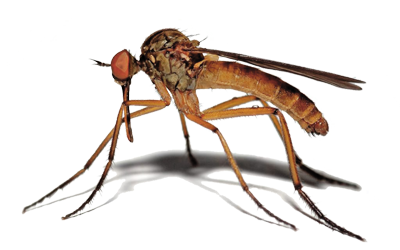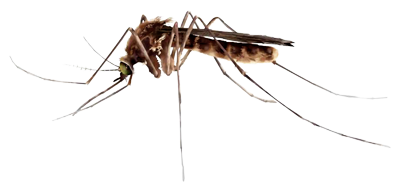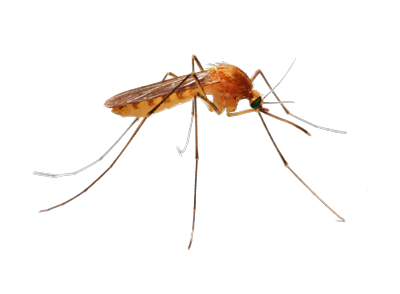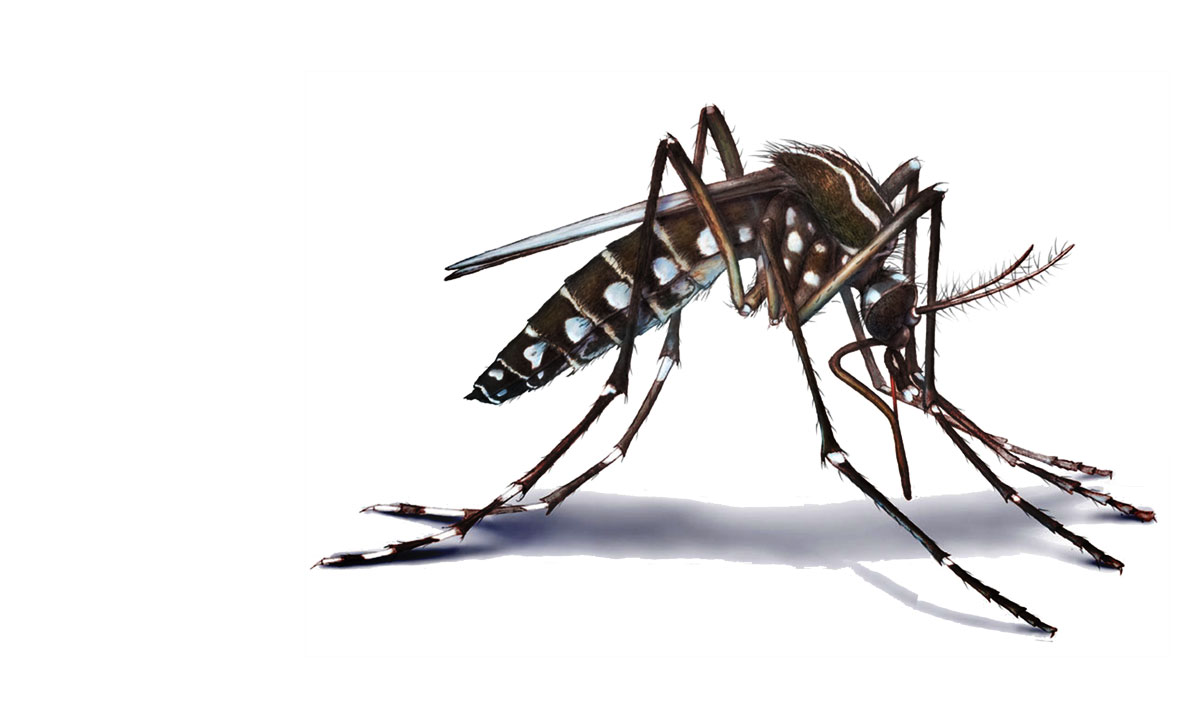Some key facts from the World Health Organization
-
Vector-borne diseases account for more than 17% of all infectious diseases.
-
They cause more than 700,000 deaths each year.
-
More than 3.9 billion people in over 128 countries are at risk of contracting dengue. There are an estimated 96 million cases per year.
-
Malaria causes more than 400,000 deaths every year globally, most of them children under 5 years of age.
Many of these diseases are preventable by taking protective measures before being exposed. Since so many saltwater anglers travel to areas where mosquitoes are endemic, this information could help you prevent serious health issues. Even if you do not travel to remote places, some of these diseases can be contracted within the continental US. In our globalized society, there is even a phenomenon known as airport malaria when a mosquito simply enters a plane and travels to places where it should not be. It feeds on an unknowing person who in turn contracts malaria or any other mosquito-borne disease. This is a rare but frightening reality. The following is a comprehensive but not entirely complete list. It contains the most common mosquito-borne illness contracted around the world.
 CHIKUNGUNYA (CHICK-GUN-GOON-YAA)
CHIKUNGUNYA (CHICK-GUN-GOON-YAA)
DESCRIPTION
A viral illness that presents with symptoms of fever and severe joint and muscle pain, headache, nausea, fatigue and rash. Joint pain can be debilitating and can vary in duration, which is very similar to dengue. After a mosquito bite, the onset of symptoms of chikungunya usually occurs between four and eight days, but can present in two days or as far out as 12 days. Symptoms can be very mild and the infection may go unrecognized, or misdiagnosed in areas where dengue also occurs. Most patients recover fully, but in some cases, joint pain may persist. Rare cases of eye, neurological and heart complications have been reported, as well as gastrointestinal complaints. Serious complications are uncommon, but in the older population, it can lead to longer duration arthritic pains and rarely, death.
GEOGRAPHY
North and South America, Europe, Africa, Asia and the Indian subcontinent. Chikungunya is in over 60 countries in Asia, Africa, Europe and the Americas. Originally believed to be isolated to the tropics, mosquitoes carrying this virus have spread to Europe and the Americas. There was an outbreak in northeastern Italy in 2007, and outbreaks in France and Croatia in 2008.
WHAT YOU CAN DO
There is no specific vaccine or treatment for chikungunya. Treatment is aimed at relieving symptoms, using anti-pyretics, analgesics for pain and fluids to maintain hydration. There is no commercial chikungunya vaccine. You can protect yourself with repellents, clothing that covers exposed skin and use of nets when sleeping.
 ZIKA VIRUS
ZIKA VIRUS
DESCRIPTION
Zika is also a viral disease, but the symptoms are usually mild and can include mild fever, skin rash, conjunctivitis, muscle and joint pain, malaise or headache. These symptoms normally last for up to seven days and seem like an ordinary virus. Zika infection during pregnancy is particularly bad because it can cause microcephaly and other fetal brain malformations, so if you are planning to get pregnant, it should be a consideration if you are traveling to an endemic area. In rare cases, Zika is also a cause of Guillain-Barré Syndrome – a neurological condition that can lead to paralysis and death.
GEOGRAPHY
Outbreaks of Zika virus have been recorded in Africa, North and South America, Asia and the Pacific. Female mosquitos carrying the virus are found in over 130 countries. 62 countries and territories have reported mosquito-transmitted Zika virus in the last five years. There has been a rise in local Zika transmission in the USA since 2015. The World Health Organization announced a Public Health Emergency of International Concern on 1 February 2016. Mosquitoes infect humans but this one is also transmitted via sexual transmission from person to person. Zika has been detected in blood, saliva, semen, spinal and other body fluids. Mother to child transmission in early pregnancy has also been reported and causes fetal demise.
WHAT YOU CAN DO
There is no specific treatment or vaccine currently available. Personal protection with repellents, clothing that covers exposed skin and use of nets when sleeping.
To reduce the risk of sexual transmission and pregnancy complications related to Zika virus infection, people living in/traveling to/or returning from affected areas should practice safer sex, and consider abstinence or condoms.
 DENGUE
DENGUE
DESCRIPTION
Flu-like symptoms occur 4-10 days after the bite of an infected mosquito; high fever accompanied by severe headache, pain behind the eyes, muscle and joint pains, nausea, vomiting, swollen glands or rash may occur. It is also called “breakbone fever” because of the excruciating joint pain, which I can attest to, having contracted dengue in the Maldives in 2013. The disease can develop into a more severe form, which is a leading cause of serious illness and death among children in some Asian and South American countries. Symptoms of severe dengue include decrease in temperature, severe abdominal pain, persistent vomiting, rapid breathing, bleeding gums, fatigue, restlessness and blood in vomit. Medical care is critical for the first 48 hours after symptoms appear to avoid complications and risk of death.
GEOGRAPHY
Dengue is endemic in more than 128 countries, with 3.9 billion people at risk. It is found in Latin America, the United States of the America, Europe, Africa and Asia. Dengue is widespread throughout the tropics, in rural and urban areas. Recently, cases were reported in Florida, the Yunnan province of China and in Japan. Dengue is very also common in Central and South American countries and has been reported in the Cook Islands, Fiji, Malaysia and Vanuatu.
WHAT YOU CAN DO:
There is no specific treatment or vaccine for dengue. Early detection and access to proper medical care lowers fatality rates to below 1%. A dengue vaccine has been licensed in a few countries by some National Regulatory Authorities for people 9-45 years of age living in endemic settings, but it not recommended for travelers who visit these endemic areas.
 WEST NILE VIRUS
WEST NILE VIRUS
DESCRIPTION
West Nile virus can cause a fatal neurological disease. Approximately 80% of those infected will not show any symptoms, but after 3-14 days, 20% of people infected may develop symptoms of severe disease including headache, high fever, neck stiffness, stupor, disorientation, coma, bleeding, tremors, convulsions, muscle weakness, and paralysis. People over 50 years old, and the immunocompromised, are at highest risk.
GEOGRAPHY
The female Culex is 1 of 3 of the most common mosquitoes to be found worldwide, except in the extreme northern parts of the temperature zone. West Nile virus is found in Africa, Europe, the Middle East, North America and West Asia. The Culex also transmits Japanese encephalitis.
These mosquitoes feed on infected birds and transmit the disease to humans and horses. They bite from dusk until dawn. In 1999, a West Nile virus circulating in Israel and Tunisia was imported to New York, producing a large and dramatic outbreak that spread throughout the continental U.S. in the following years.
WHAT YOU CAN DO
No vaccination exists for humans. Recommended personal protection and mosquito control includes repellents, clothing that cover exposed skin, window screens, and destruction of breeding sites, especially polluted water bodies. Treatment for patients with neurological type of West Nile virus includes hospitalization, intravenous fluids, respiratory support, and prevention of secondary infections.
 MALARIA
MALARIA
DESCRIPTION:
Symptoms appear seven days or more (usually 10-15 days) after the bite of an infected mosquito. The first symptoms are fever, headache, chills and vomiting. These symptoms may be mild and difficult to recognize as malaria. There is one particular type of malaria that is concerning and fatal called P. falciparum malaria. It can progress rapidly to severe forms of the disease, especially in the immunocompromised. Severe P. falciparum malaria is almost always fatal without treatment. Travelers are susceptible to this type unless they have had some type of exposure and immunity.
GEOGRAPHY
In 2015, more than 3.2 billion people were at risk, and ongoing malaria transmission was found in 95 countries and territories. Sub-Saharan Africa carries a disproportionately higher share of the global malaria burden, with 88% of cases and 90% of global malaria deaths. P. falciparum is the most prevalent parasite in Africa and is responsible for most malaria deaths globally. The Anopheles mosquitoes are the primary vectors and bite mainly at night, from dusk to dawn. If you’re going to western Africa for a record tarpon, bring your bug spray.
WHAT YOU CAN DO:
Antimalarial medicines can be used to prevent malaria. For travelers, malaria can be prevented through chemoprophylaxis, the act of treating yourself prior to contracting the disease. This is a common practice when visiting places like western Africa, Central America and South America.
 YELLOW FEVER
YELLOW FEVER
DESCRIPTION
After 3-6 days many symptoms begin, including fever, muscle pains, backache, headache, shivers, loss of appetite, nausea or vomiting. Roughly 15% of patients enter a second, more toxic phase within 24 hours. Symptoms of this phase may include high fever, jaundice (yellow discoloration of your skin from bilirubin building up), and abdominal pain with vomiting. Bleeding can occur almost anywhere but mainly from the mouth, nose, eyes or stomach. Blood usually appears in the vomit and feces as well, and kidney function can deteriorate rapidly. Half of the patients who go into the toxic phase die within 10-14 days, the other 50% make a full recovery.
Yellow fever can be difficult to diagnose and is confused with severe malaria, dengue, leptospirosis, viral hepatitis or other hemorrhagic fevers, like West Nile virus and Zika.
GEOGRAPHY:
Yellow fever is found in Africa and Latin America, in urban, jungle, forest, semi-humid conditions, and around houses. In May 2016, an emergency committee of the World Health Organization called for intensified national action and international support for yellow fever outbreaks in Angola and Democratic Republic of the Congo. The sylvan yellow fever (AKA jungle yellow fever) occurs in Central and South America, Trinidad, Brazil, and Argentina and is carried by infected monkeys. Mosquitoes infect monkeys and then go on to transmit the disease from monkeys to humans, and from human to human.
WHAT YOU CAN DO
Vaccination is available for humans and if you did time in the military, you were vaccinated. A single dose of vaccine provides life-long protection against yellow fever disease. If you aren’t sure, you can take a smaller dose of the vaccine (1/5 dose) which provides 12 months of immunity.
Sources:
CDC – Washington DC www.cdc.gov
The World Health Organization – www.who.org


